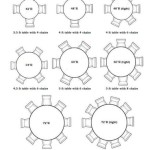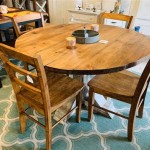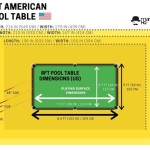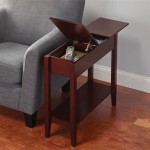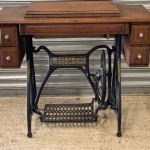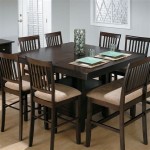Cracked Glass Dining Room Table: Understanding the Risks, Repair Options, and Prevention
A glass dining room table can add a touch of elegance and modernity to any home. Its sleek surface reflects light, creating an airy and spacious feel. However, the inherent fragility of glass means that a cracked glass dining room table is a relatively common problem. Understanding the causes of such damage, the options for repair or replacement, and preventative measures is crucial for any homeowner who owns, or is considering purchasing, a glass dining table.
The aesthetic appeal of a glass dining table is undeniable. It effortlessly complements various decorating styles, from minimalist to contemporary. Its transparency allows the beauty of the underlying table base to shine through, unlike solid-top tables that conceal the structure. Glass is also relatively easy to clean, requiring only a damp cloth and mild cleaner to maintain its shine. Despite these advantages, the potential for cracking remains a significant concern for owners.
The severity of a crack in a glass dining table can range from a minor surface scratch to a complete shattering of the glass. A small crack might seem insignificant, but it can quickly propagate under stress, potentially leading to more extensive damage. Larger cracks not only compromise the table's appearance but also present a safety hazard, especially if the glass is tempered and designed to shatter into small, relatively harmless pieces when broken. However, even "safe" shattering can be messy and require careful cleanup. The purpose of this article is to delve into the intricacies of cracked glass dining room tables, providing comprehensive information on the issues they pose and ways to address them.
Identifying the Causes of Cracks in Glass Dining Tables
Several factors can contribute to cracks in glass dining tables. Understanding these causes is the first step in preventing future damage. Often, the cause stems from a combination of factors acting in concert.
Impact: Direct impact is perhaps the most obvious cause of cracks. Dropping heavy objects onto the table, especially near the edges, can create a stress point that leads to a crack. Even seemingly minor impacts can weaken the glass over time, making it more susceptible to cracking later on. Children playing around the table, or pets jumping onto it, are common scenarios that can result in accidental impacts. The type of glass also plays a role; tempered glass is more resistant to impact than standard glass, but even tempered glass has its limits.
Thermal Stress: Glass expands and contracts with temperature changes. Sudden or extreme temperature fluctuations can induce stress within the glass, leading to cracks. Placing a hot dish directly onto a cold glass table, for example, can cause thermal shock, resulting in immediate cracking. Similarly, exposing the table to direct sunlight for extended periods, especially near a window, can cause uneven heating and subsequent stress. Avoiding extreme temperature variations is a key preventative measure.
Manufacturing Defects: Although less common, manufacturing defects can also contribute to cracking. Imperfections in the glass, such as tiny air bubbles or inconsistencies in thickness, can create weak points that are more prone to cracking under stress. These defects may not be immediately apparent but can gradually worsen over time. While a homeowner cannot directly control manufacturing defects, purchasing from reputable manufacturers with stringent quality control processes can minimize the risk. A warranty might also offer some protection in case of such defects.
Uneven Support: If the table base does not provide adequate and even support for the glass top, stress can concentrate in specific areas, leading to cracks. This is particularly true for large or heavy glass tops. Ensuring that the base is stable and that the glass is properly seated on the supports is crucial. Using rubber pads or other cushioning materials between the glass and the base can help distribute the weight more evenly and reduce the risk of stress concentration. Over time, the securing mechanisms of the table base may loosen, contributing to inadequate support. Regular inspections and tightening of these mechanisms can help mitigate this risk.
Improper Handling During Installation or Moving: Glass is susceptible to damage during handling. Careless installation or moving, such as dropping or bumping the glass, can create hairline fractures that may not be immediately visible but can eventually propagate into larger cracks. Using proper lifting techniques and protective padding is essential when moving a glass dining table. Professional movers are typically experienced in handling fragile items and can minimize the risk of damage during transport.
Evaluating Repair Options for a Cracked Glass Dining Table
The decision to repair or replace a cracked glass dining table depends on several factors, including the severity of the crack, the cost of repair versus replacement, and the availability of repair services. A thorough assessment of the damage is necessary before making a decision.
Minor Cracks and Chips: For small cracks or chips, particularly those located on the edges of the table, repair may be a viable option. Specialized glass repair kits are available that can fill in the cracks and restore the surface's smoothness. These kits typically contain a resin that is injected into the crack and then cured with ultraviolet light. While these repairs are not always invisible, they can significantly improve the appearance of the table and prevent further propagation of the crack. It's important to note that this type of repair is primarily cosmetic and may not fully restore the structural integrity of the glass.
Significant Cracks: If the crack is large, deep, or extends across a significant portion of the table, repair is generally not recommended. Attempting to repair such cracks can be costly and may not result in a structurally sound or aesthetically pleasing outcome. Furthermore, a repaired crack may still be susceptible to future breakage. In these cases, replacement is usually the more practical and safer option.
Professional Repair Services: Many glass repair companies offer on-site repair services for glass furniture. These professionals have the expertise and equipment to assess the damage and determine the best course of action. They can also provide a more durable and aesthetically pleasing repair than can be achieved with a DIY kit. However, professional repair services can be expensive, and it's important to obtain quotes from multiple companies before making a decision. Be sure to inquire about the warranty on the repair work.
DIY Repair Considerations: While DIY repair kits can be a cost-effective option for minor damage, they require careful application and may not always produce satisfactory results. It's important to follow the instructions carefully and to practice on a scrap piece of glass before attempting to repair the table. DIY repairs are generally best suited for small chips or cracks in less conspicuous areas of the table. Any attempt to repair a table with extensive or complex cracks should be left to professionals.
Replacement Options: If repair is not feasible, replacing the glass top is the most straightforward solution. Many glass companies can custom-cut a new glass top to the exact dimensions and specifications of the original. When replacing the glass, consider upgrading to tempered glass if the original was not already tempered. Tempered glass is significantly stronger and more resistant to impact, making it a safer and more durable option. The cost of replacement will vary depending on the size, thickness, and type of glass.
Preventative Measures to Protect Your Glass Dining Table
Prevention is always better than cure. Taking proactive steps to protect your glass dining table can significantly reduce the risk of cracking and extend its lifespan. These measures are relatively simple to implement and can provide long-term peace of mind.
Use Tablecloths and Placemats: Tablecloths and placemats provide a protective barrier between the glass surface and objects placed on it. They can cushion the impact of dropped items and prevent scratches from tableware. Consider using heat-resistant placemats or trivets under hot dishes to prevent thermal shock. Choosing the right type of tablecloth and placemats is crucial for both protection and aesthetics.
Avoid Placing Heavy or Sharp Objects on the Table: Exercise caution when placing heavy or sharp objects on the table. Avoid dragging heavy items across the surface, as this can cause scratches or cracks. When placing heavy decorative items, such as vases or sculptures, consider using felt pads or coasters to distribute the weight evenly and prevent damage. Reinforce to occupants of the residence the importance of careful placement of items to prevent future damages.
Regular Cleaning and Maintenance: Regular cleaning can help prevent the buildup of dirt and grime, which can scratch the glass surface. Use a soft cloth and a mild glass cleaner to wipe down the table regularly. Avoid using abrasive cleaners or scouring pads, as these can damage the glass. Periodically inspect the table base to ensure that it is stable and that the glass is properly seated on the supports. Tighten any loose screws or bolts.
Protective Films and Coatings: Applying a protective film or coating to the glass surface can provide an extra layer of protection against scratches and cracks. These films are typically transparent and can be easily applied to the glass. They can also help to reduce glare and fingerprints. While not impenetrable, these films can absorb some of the impact from minor accidents, helping to prevent more serious damage. Furthermore, some films offer UV protection, reducing fading of surrounding furniture and artwork.
Strategic Table Placement: Consider the location of your glass dining table within the room. Avoid placing it in areas where it is likely to be bumped or knocked into, such as near doorways or high-traffic areas. If possible, position the table away from direct sunlight to minimize the risk of thermal stress. Ensure that the surrounding area is free of potential hazards, such as sharp objects or unstable furniture.
By understanding the risks associated with cracked glass dining room tables, evaluating repair options carefully, and implementing preventative measures, homeowners can protect their investment and enjoy the beauty of their glass table for years to come. While glass is inherently fragile, with proper care and attention, it can be a durable and elegant addition to any dining room.

Crackle Glass Artvue

Crackled Glass Broken Tables Table Tops

Crackle Glass Table Top Modern Dining Room London By The Warehouse Houzz

Crackled Glass Table Tops Shattered Top Cracked

Crackled Glass Broken Tables Table Tops

Frosted Glass Dining Table Shattered Ultra Clear Boomerang Sans Soucie Art

Frosted Glass Dining Table Shattered Ultra Clear Boomerang Sans Soucie Art

Crackled Glass Broken Tables Table Tops

Eliza Cracked Glass Dining Table In Brushed Stainless Steel Modus Furniture

Pin Page

